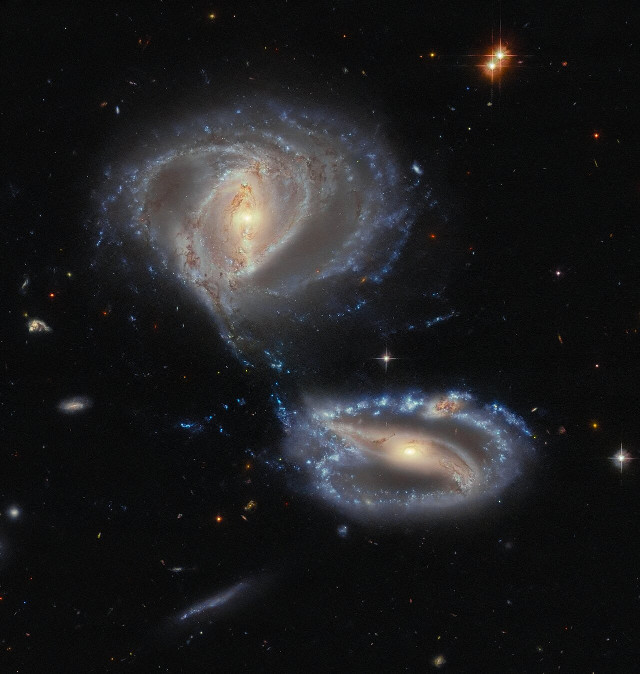
An image captured by the Hubble Space Telescope depicts Arp-Madore 2339-661, an object that until not many years ago was considered a pair of interacting galaxies, cataloged as NGC 7733 (bottom right) and NGC 7734 (top left). However, observing the upper arm of NGC 7733, it’s possible to see a sort of large knot of a color different from the predominant blue which is actually a dwarf galaxy, now cataloged as NGC 7733N. The consequence is that the interaction taking place is what some call a merging group. Mergers between two galaxies are normal but sometimes there are more galaxies and in this case, there are three of them that show signs of having active galactic nuclei.
The Arp-Madore catalog of peculiar galaxies includes Arp-Madore 2339-661, an object about 500 million light-years away from Earth. Two barred spiral galaxies are interacting and in the image, that’s clearly visible in the distortion of their arms, which are almost touching and will merge over time.
Years ago, the observations showed that the situation is more complex than astronomers previously thought: what looked like a knot and could be a star cluster in NGC 7733’s upper arm shows speed and direction of movement indicating that it’s a separate object. These are problems that astronomers may face when studying such distant objects. Today the separate object is considered a dwarf galaxy, cataloged as NGC 7733N.
An article published in July 2021 in the journal “Astronomy & Astrophysics” offers evidence that the three galaxies have active galactic nuclei. This means that the supermassive black holes at their centers are surrounded by significant amounts of materials that are slowly being devoured and are heated considerably, generating powerful electromagnetic emissions. In the case of the components of Arp-Madore 2339-661, they are classified as Seyfert galaxies, whose active galactic nuclei exhibit highly ionized spectral lines.
The tidal forces generated by gravitational interactions can also affect the clouds of interstellar gas present in the interacting galaxies. One possible consequence is that the gas approaches the central supermassive black hole triggering an active galactic nucleus. This means that having three galaxies with this type of nucleus in an interacting group is not strange. The rare event is the trio of galaxies that are interacting and this makes the triple active galactic nucleus particularly interesting.
The timeline of a galactic merger is very long. Arp-Madore 2339-661 is in the early stages of a process that will continue for many millions of years. This is giving astronomers the opportunity to study a merging group that is having consequences on the galactic nuclei as well.

